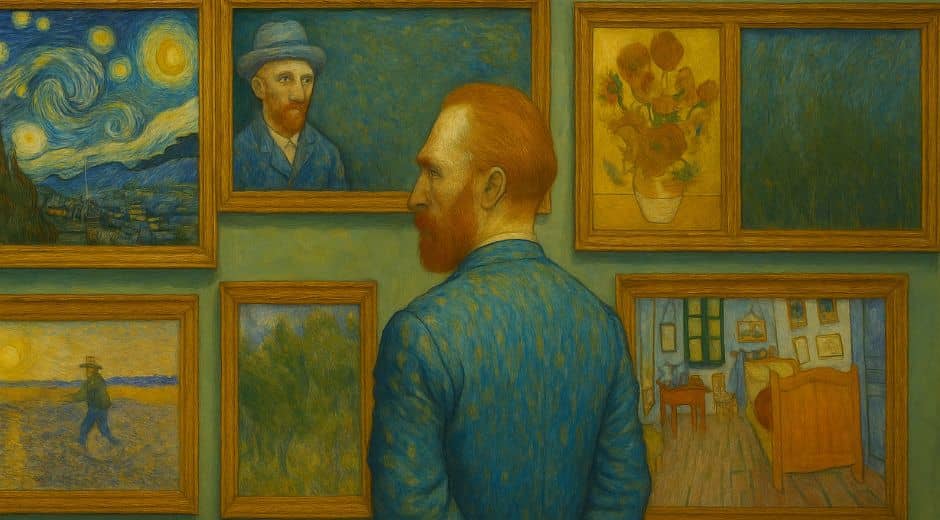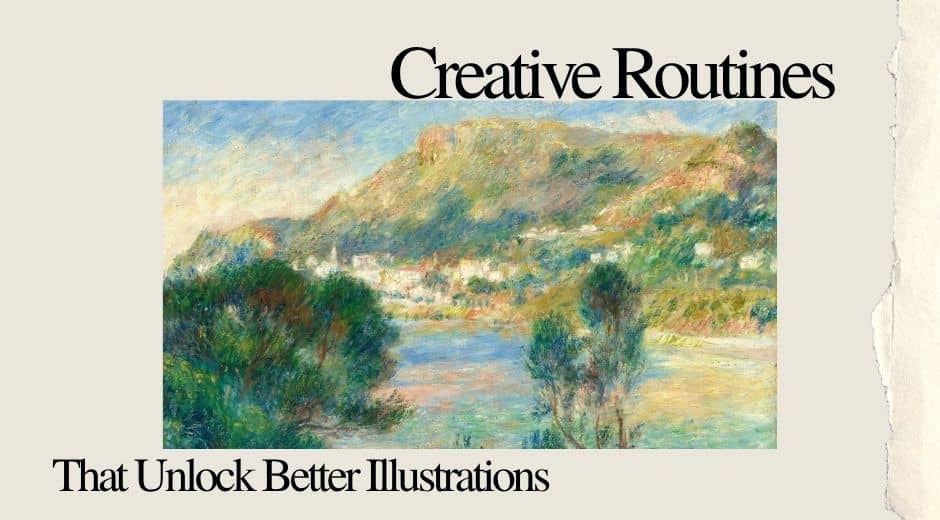Quiet Moments That Shape the Creative Mind
Ideas don’t always appear with force. They drift in like soft shadows — during a walk, while washing dishes, or in the small minutes before sleep.
They often emerge when we’re not looking for them, woven into silence, rest, or tiny shifts in mood.
In an age filled with noise, discovering these gentle arrivals becomes its own kind of practice.
Not seeking, not forcing — simply noticing.
1. The Power of Empty Moments
Modern life often leaves little room for stillness. Yet ideas often slip in during moments that seem unimportant — waiting in line, sipping coffee alone, sitting in traffic.
These pauses act like open doors.
With nothing demanding our attention, our mind wanders, connects fragments, and forms new concepts that were waiting just below the surface.
These in-between times are fertile ground. They remind us that imagination grows best when given space.
Explore how visual structure influences perception in
“The Hidden Architecture Behind Composition”
https://museatime.com/illustration-drawing/composition-hidden-architecture/
2. Inspiration Through Observation
When we slow down enough to truly look — not judge, not analyze — the world becomes a source of surprise.
Shadows shifting across a wall, the way people gesture in conversation, the rhythm of footsteps on pavement — all of these can spark ideas.
Observation asks nothing of us except curiosity.
It taps into a way of seeing that many of us forget as adults.
The more we notice, the more the mind begins to gather small details that eventually form new thoughts.
3. Unexpected Triggers in Daily Life
A scent, a piece of music, the texture of an old book cover — simple triggers often unlock entire thought patterns.
They bring back memories or stir the imagination in directions we weren’t anticipating.
What begins as a passing sensation can turn into a direction for a project, a new style, or a different approach to an ongoing idea.
These sparks remind us that creativity doesn’t only come from effort — it also comes from being open.
4. Night Thoughts and Early Mornings
There’s a particular clarity found in late-night quiet or just before dawn.
At these times, the mind loosens its grip on structure and becomes more fluid.
Thoughts wander gently, forming unexpected connections.
Many artists and thinkers describe their best concepts surfacing during these hours, when the mind drifts without rules or expectations.
It’s not magic — it’s simply the mind unburdened.
5. The Role of Routine Without Restriction
Commitment to a consistent space or habit can also invite ideas.
A corner of a room, a particular chair, a cafe table at the same window — these locations become anchors.
When we return to them regularly, our mind learns that “this is where ideas are welcome.”
Routine doesn’t confine imagination.
It signals the brain to open its inner library.
6. Letting Thoughts Breathe
Ideas often appear half-formed. They arrive as impressions rather than complete concepts.
Giving them time — instead of rushing to shape them — allows them to grow more naturally.
This gentle patience often leads to richer, deeper outcomes.
Imagination thrives when it’s not pushed.
7. The Influence of Inner Calm
Staying connected to our inner world — through reflection, rest, or meditative practices — strengthens the ability to receive new thoughts.
Inner quiet acts like a soft landing pad where ideas feel safe to appear.
To explore how mindfulness elevates mental clarity, visit:
FocusMindFlow.com
https://focusmindflow.com/
8. Embracing the Unknown
Not all ideas arrive ready to be used.
Some come as small fragments or fleeting sensations that make sense only much later.
Honoring these moments, even if they seem insignificant, expands our creative reservoir.
The unknown isn’t a threat — it’s a starting point.
Conclusion: Ideas Grow Where Silence Lives
The most powerful ideas often begin quietly.
They rise through stillness, wander in through gentle observation, or fall into place when we stop trying so hard to chase them.
“Sometimes the smallest pause reveals the biggest thought.”
When we welcome quiet, we welcome imagination.
Ideas don’t need pressure — they need room.
In those spaces, the mind whispers what it has been waiting to say.
Inspiration Expression Eternity

Shaping Atmosphere: How Visual Choices Transform a Space
A space changes instantly through form, color, shadow, and arrangement. Explore how thoughtful visual decisions influence mood and elevate everyday interiors.

Shaping a Scene: How Structure Guides the Eye
Every sketch benefits from structure. By guiding the viewer’s eye with thoughtful arrangement, illustrators create pieces that feel intentional, balanced, and visually inviting.

How Traditions Evolve Through Modern Life
Traditions don’t disappear as time passes — they shift, adapt, and take on new forms. Explore how modern life reshapes long-standing customs while keeping their spirit alive.










